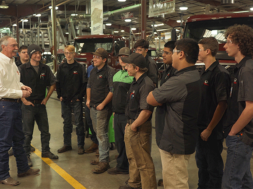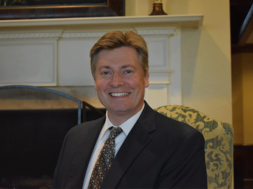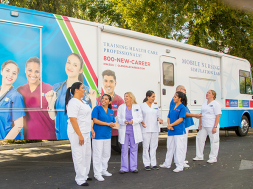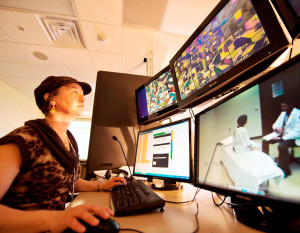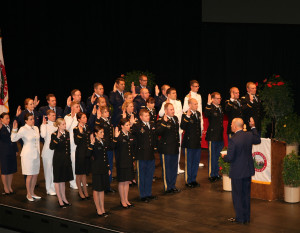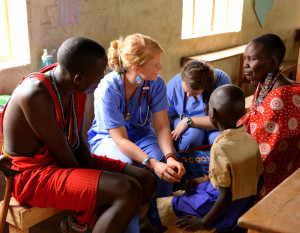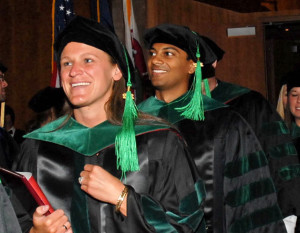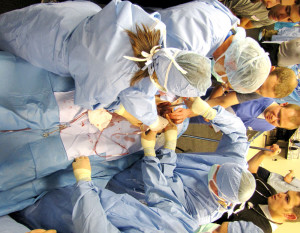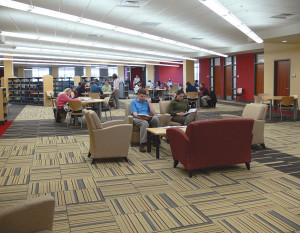
Rocky Vista University is Proof that For-profit and Medical School can be a Good Mix
Written by Barbara A. Schmitz from an interview with Cheryl D. Lovell, PH.D., President & CEO, Rocky Vista University
ABOUT DR. CHERYL D. LOVELL
Dr. Cheryl D. Lovell, president and CEO of Rocky Vista University, says that after working decades in higher education, her current position was an “opportunity in the making for 35 years.”
Lovell was hired in December 2012 to lead the health sciences university located in Parker, Colo. Rocky Vista’s College of Osteopathic Medicine was founded in 2006 and opened its doors in August of 2008, enrolling students in its four-year program of study leading to the Doctor of Osteopathic Medicine, or D.O. degree.
She brings vast experience in accreditation and public policy to RVU.
“I have worked in both public/private non-profit, non-profit/private, and now for-profit, campus based experiences,” she says. “I worked in Georgia, Texas, Arkansas and Florida with some campus-based opportunities. I have had system-level experience in the states of Colorado and Florida.”
She also has experience with policy agencies. Lovell previously worked as staff associate for research at the National Center for Higher Education Management Systems (NCHEMS), chief academic officer for the Colorado Department of Higher Education; associate dean, program chair and program coordinator at the Morgridge College of Education at the University of Denver, director of the State Higher Education Executive Officers (SHEEO)/State Postsecondary Review Entity (SPRE) Network, and more.
In addition, she has authored more than 80 peer-review professional presentations/papers and numerous publications, and has received funding for nine research projects pertaining to issues in higher education.
Lovell says her career path ideally prepared her for this kind of role. “It has been a good fit for me, and I am a good fit for the university.”
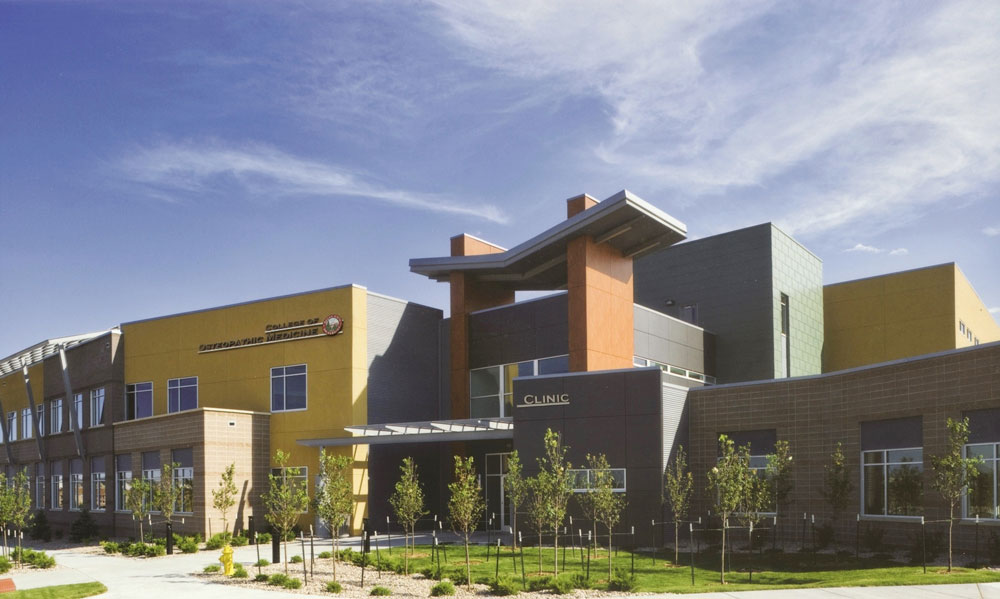
The front exterior of RVU.
Rocky Vista University became the only for-profit osteopathic medical school in the nation in 2008. Seven years later, it has shown unequivocally that for-profit schools and physician training can mix.
“Quality education is available in a variety of models, and a for-profit medical school like Rocky Vista University has been highly successful because of our commitment to student success,” says Cheryl D. Lovell, president and CEO of Rocky Vista University since January 2013.
Lovell says their mission is to provide quality health care education while inspiring students to serve with compassion, integrity and excellence. “Medical education is what we are about,” she says. “We have carved out a niche for ourselves to think about only graduate level medical education.”
In fact, it has been a very successful niche. In its first four years of graduating classes, 100 percent of their Doctor of Osteopathic Medicine, or D.O., students have placed in residency programs that range from three to eight years depending on their medical specialty, Lovell says. Considering that it is a competitive process — all graduating students from all medical schools in the country interview and register in the match process and then are selected by hospitals and residency programs nationwide — that is impressive.
In fact, Lovell calls it stunning. “There are premiere medical schools in this nation today that do not have 100 percent residency placement from each of their classes, so that is an amazing outcome,” she says. “It is not only that they successfully graduated from a four-year medical school; they were selected through a national match process for a very competitive residency program.”
In addition, Rocky Vista University, based in Parker, Colo., was also No. 1 in the nation this year, after scoring in the high 90s over the past few years, on the board licensure exam pass rate for COMLEX 1, a cognitive examination that assesses the osteopathic medical knowledge and clinical skills considered essential for osteopathic generalist physicians to practice medicine without supervision.
“From day one, our students have been doing very well on their national board exams and leading the country,” Lovell says.
Lastly, Rocky Vista’s graduation rates have been about 90 percent since they started, she adds, noting that it is common for a few students to drop out of each class after realizing medical school is not their real dream, or because they do not have the discipline to study. It takes four years for students to complete their medical training there.
“Our successful outcomes have made people realize it is possible,” Lovell says. “The naysayers in the medical education arena said the world is going to come to an end because of the for-profit medical school. But you cannot judge a book by its cover. It is hard to complain with the successes we have had…”
Rocky Vista University is regionally accredited by the Higher Learning Commission, which allows the university to add degrees and enter in partnerships with other accredited universities. In addition, the Commission on Osteopathic College Accreditation, or COCA, accredits Rocky Vista’s medical program, while the American College of Surgeons accredits their simulation center.
Accreditation ensures students that the school meets standards. But Rocky Vista University also requires prospective students to meet standards, making it very competitive for students to get into the medical college.
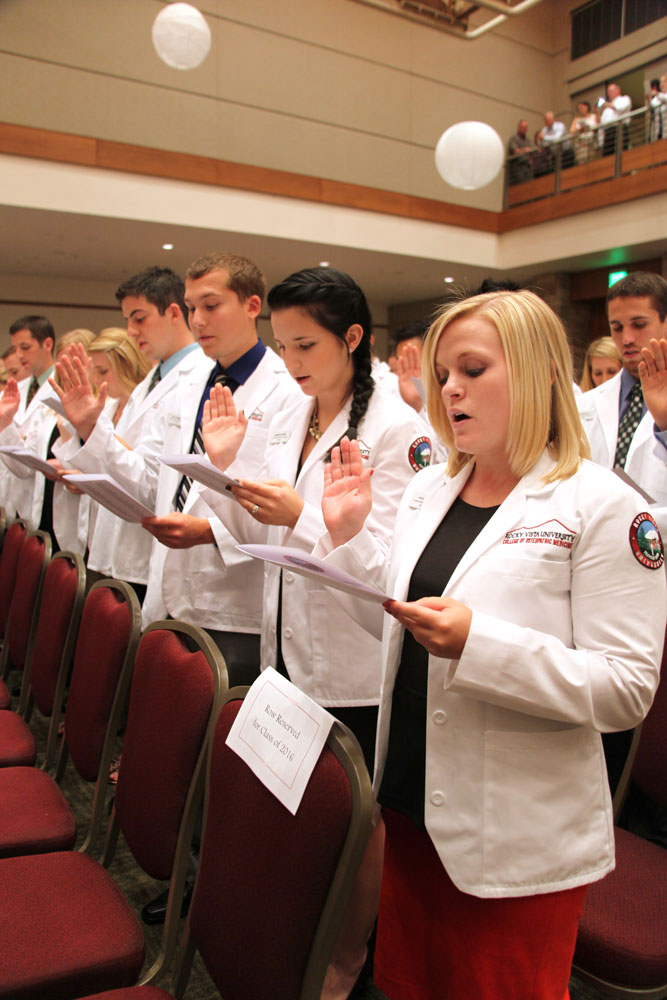
RVUCOM matriculants at the White Coat Ceremony.
“Class size within the School of Osteopathic Medicine is completely regulated and controlled by the accrediting body,” Lovell explains. While their official class size is 150, their accrediting body allows an 8 percent variance, plus or minus. “So that means we can admit up to 162,” she says. “We try to admit 162 because, frankly, we get almost 6,000 applications. The interest is that high.”
Students wanting to apply to a D.O. school do so through the American Association of Colleges of Osteopathic Medicine Application Service (AACOMAS). The Service collects all the records and application materials, and then submits to specific colleges the applications that meet or exceed their minimum requirements.
Basic requirements at Rocky Vista University include a minimum of 3.0 science and cumulative GPA. However the mean GPA for entering students is a 3.6. A suitable test score on the MCAT, or medical college admissions test is also a requirement.
Their admissions executive director then reviews students’ files to determine who will be invited for an interview. Two faculty members, who could be a D.O., M.D. or Ph.D., typically interview each student. “There are a lot of things that we look at to determine if a student would be a good fit for Rocky Vista University,” Lovell says. “In addition to grades and MCAT scores, we have a strong focus on a person having some experience and a history of service and leadership. We also know that if they have some kind of medical experience — a clinical experience, or work in a hospital or a doctor’s office — that those are good motivations for entering the profession. We go beyond the paper process of test scores and grades and look at how they have spent their undergraduate years…”
Lovell says each year the process eliminates some qualified applicants, who could probably make it through medical school, just because there is not a seat for them.
“In fact, we could double our enrollment and still have high quality students,” she says. “But, again, the medical accrediting bodies for the D.O. schools and the M.D. schools control the number of students in medical schools. The biggest fear is that there are going to be more students in medical school than there are residency seats, or residency programs around the country.”
And that is a very real fear. “If we continue with the enrollment demand we have had across the nation, in a couple of years we know that there are going to be more students in medical school than there are residency positions available,” she says. “That is an uncomfortable position for everyone.”
All medical schools are working to create more residency opportunities. “But the number of residency programs in the country is capped by a 1997 budget reconciliation act in Congress and there has not been any politician willing to address that cap,” Lovell says. “So that number has been fixed for a number of years, yet medical school demand and interest in enrollment grows every year.”
At the same time, there is a shortage of physicians in parts of the country, particularly in those areas that are not urban or metropolitan. “That shortage is going to grow over the coming years as more physicians retire.”
There are currently 171 accredited medical schools in the country, and Rocky Vista is the only taxpaying for-profit medical school in the nation. But paying taxes is not a negative for Rocky Vista University, Lovell says. “We provide an unbelievable resource to the state of Colorado without one dime of state tax money. So having a for-profit school in the state has been applauded by our state and we have been held in high regard here.
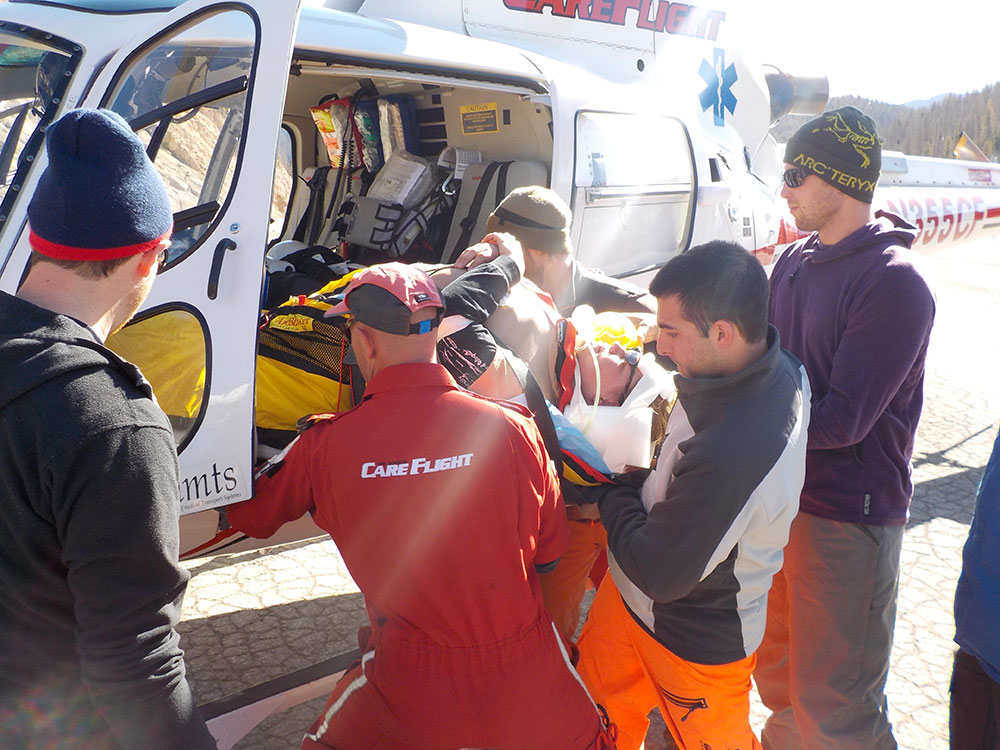
Students in the Rural and Wilderness Medicine honors track recently collaborated with a local ski patrol to learn how to track and care for avalanche victims.
“They realize the excellence that we provide and the benefit the entire state receives as a result of our being here,” she says. “So paying taxes is not a negative thing and I think successful outcomes speak for themselves.”
Despite limited residency options, other schools continue to add physician-training programs. In fact, a for-profit New Mexico school recently received recognition to begin the accreditation process, which they should receive in four years, and which will bring the number of accredited medical schools to 172, Lovell says.
Lovell says she has also heard of others who are in the process of starting for-profit medical schools. “But it is one thing to talk about it, and it is another thing to have the resources to do it,” she says. “We are not sure about the status of a couple others that have been talked about. But it is a substantial requirement of money upfront and of resources to carry this out.”
While both medical doctors (M.D.s) and osteopathic physicians (D.O.s) can practice medicine, there are three key criteria that distinguish the two. “One, osteopath physicians believe the body is made up of systems and that the systems are interrelated,” Lovell says. “Allopathic M.D. physicians often will try to disaggregate to the smallest unit and treat some sign or symptom in isolation of the rest of the body.”
Secondly, osteopathic physicians believe that the musculoskeletal system impacts people’s health. “It impacts your organs and your body’s ability to operate correctly,” she says. “Think about that: If you are sitting slouched over at your desk, it is sometimes hard to breathe because it impacts your lungs. You need to sit up and align your musculoskeletal system correctly to allow your lungs to expand appropriately and comfortably. Your musculoskeletal system impacts your health and it needs to be properly aligned.”
Thirdly, osteopathic physicians believe that individuals control their own health in that they are an active participant and need to own their health, Lovell says. “Do we overeat? Do we smoke? Do we drink too much?” she asks. “To a large extent, we have a role in our health in that we need to own that responsibility and be an active participant.”
Lovell says there are both M.D. allopathic licensure exams and D.O. osteopathic licensure exams. “We require that our graduates take both,” she says. “It just gives them greater opportunities overall, including additional residency opportunities. It also gives them a chance to compete under any circumstance.”
One of the biggest challenges facing Rocky Vista University is regulatory. Lovell says they have been working even before Gainful Employment regulations were finalized to get an exemption to the rules.
“Of the 171 medical schools, we are the only one to which Gainful Employment applies,” she says.
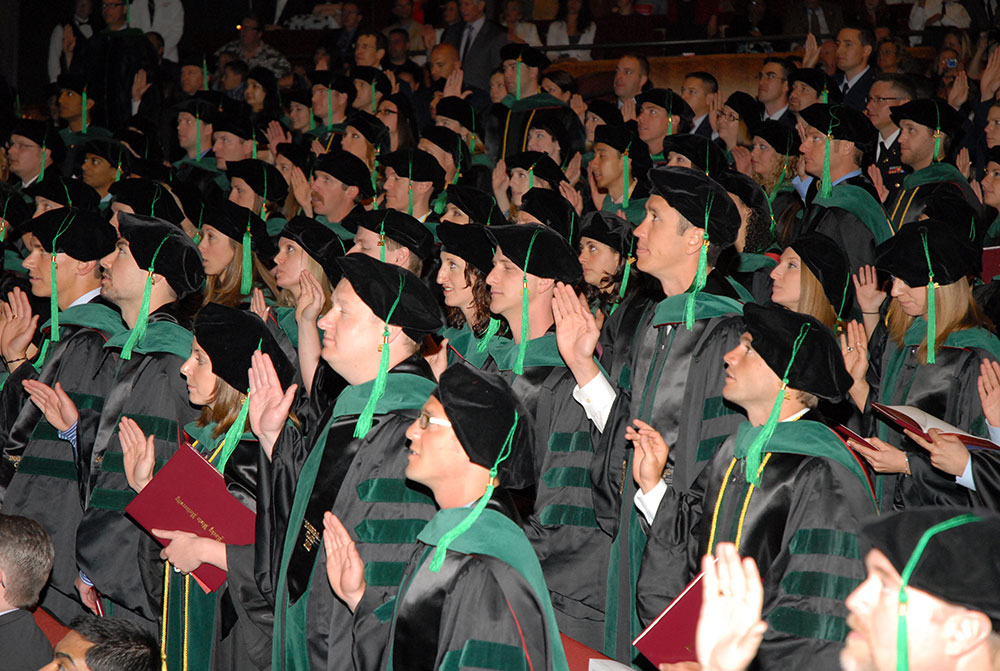
RVUCOM graduates during commencement ceremony.
Lovell says she spent quite a bit of time during the last three years to build support on Capitol Hill for an exemption for their school. “After exhausting those conversations through the negotiated rulemaking process, and even after that with the Department of Education, it is clear that it will take an act of Congress to carve out an exemption for RVU, even though there is support for that,” she says.
“Frankly, when Gainful Employment was written, no one even thought about a medical school, and definitely not one that is successful, Lovell says. “There is lots of emotional support for us to get an exemption, and we are still working with our Congressional leaders to get one.”
Lovell says there is a six-year time lag allowed for medical schools within Gainful Employment because students leave medical school and then go into a residency that could last anywhere from 3-8 years. “That time lag allows our students to go through their residency process and then be hired as a physician,” Lovell says. “The odd part about it is that everyone recognizes that with 100 percent residency placement we have done our duty; we have met our obligations. They are gainfully employed in a residency program, but the residency period is not being considered employment.”
Lovell says what she finds most ironic is that there are two major White House initiatives that are at odds with each another, and they sit at the nexus of both — Gainful Employment and the Affordable Care Act. “The center of the Affordable Care Act is to get enough primary care physicians in the workforce to treat this large, increased number of people who are supposed to be on health insurance,” she says. “They want us to follow Gainful Employment rules, but they also want more primary care physicians who are the lowest paid positions of all the physicians. If we encourage our students to go in to high-end specialties, Gainful Employment would not be an issue at all because their salaries would be exceedingly high. But a primary care physician, especially in rural parts of Colorado, could be making as little as $130,000 to $150,000. You know how Gainful Employment works; it is their medical school debt versus their salary. We estimate our debt at about $200,000, which is very modest for medical school debt. In fact, our tuition is within $1,000 of state medical schools in Colorado. ”
A news report backs that statement up. For the last two years, U.S. News and World Report has rated Rocky Vista University as the 10th least expensive private medical school in the nation.
For the future, Lovell hopes to convert Rocky Vista University into a comprehensive health sciences school. “That is the focus of new heights in medical education,” she says. “It is much more comprehensive.”
While they now have the College of Osteopathic Medicine, they are also in the preliminary accreditation stage with the professional body that accredits master’s degrees in physician’s assistant studies. “We are taking the steps to implement a PA program, which is a natural extension of a medical school,” she says, noting they should enter their first class in the fall of 2018.
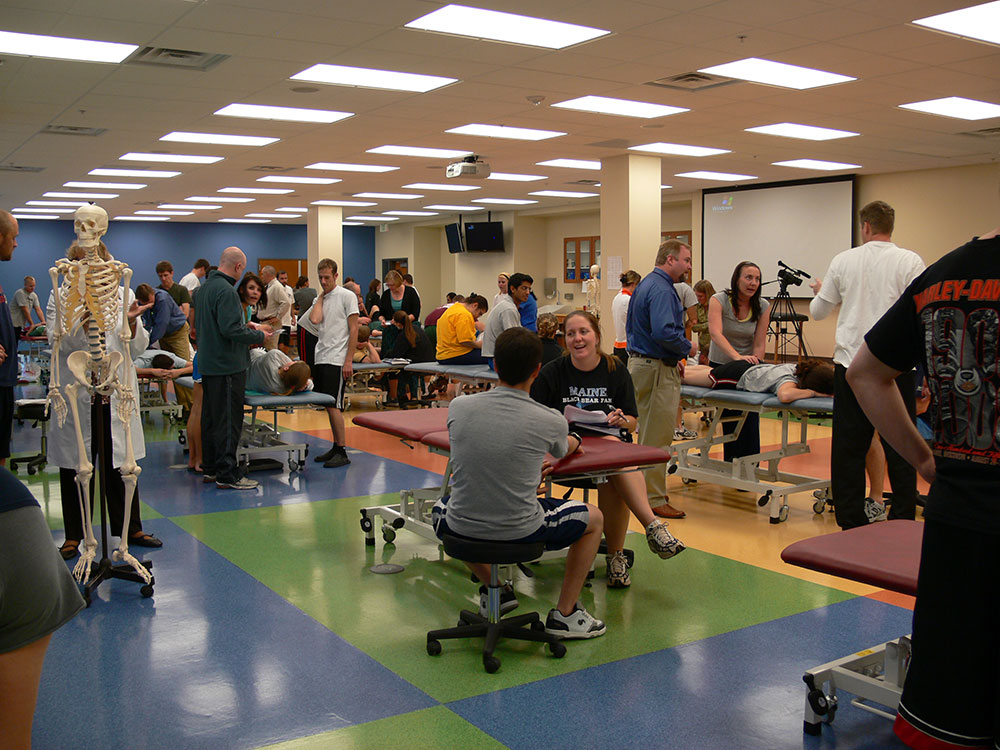
RVUCOM’s Osteopathic Manipulative Medicine (OMM) Lab.
They are also working on creating a master’s degree in biomedical sciences. “The intention there is to, again, capitalize on the core science behind the medical school and take advantage of the faculty members who teach in the medical school to also teach in a biomedical science program,” she says. “A biomedical science program has traditionally two tracks: One is for students who are not as well-prepared for medical, dental or veterinary school because they need more help with their basic sciences. A biomedical science program is really great for students who need that additional year of science education. But it is also a good degree for a researcher in maybe a biomedical science field who may be working at a pharmaceutical company, or a medical technology or device company.”
Lovell says they will present a final draft on the master’s in biomedical sciences to their Board of Trustees this summer, and then start the accreditation process.
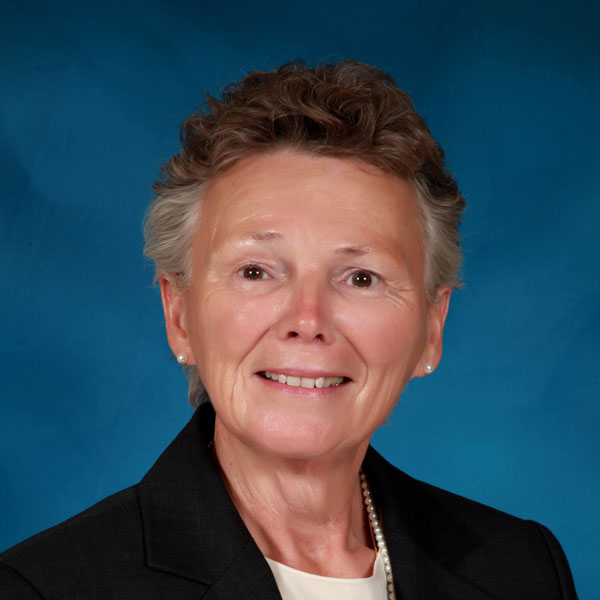
Dr. Cheryl D. Lovell is president of Rocky Vista University in Parker, Colorado. Its College of Osteopathic Medicine is a leader in global, rural/wilderness, and military medicine.
Previously, Dr. Lovell was professor of higher education and Associate Academic Affairs Dean with the University of Denver’s Morgridge College of Education. She also served as Chief Academic Officer for the State of Colorado in its Department of Higher Education. She was responsible for its academic and student affairs, research/information/data policy analyses, and student access division.
Dr. Lovell has edited the ASHE Reader on Public Policy and Higher Education (2010), and published book chapters on “Federal Public Policy Issues and Community Colleges” in Community Colleges for the Future and “Community Colleges in a Global Society: Is There One Best Model?” in Globalization: Education Research, Change, and Reform.
Dr. Lovell was also Vice President of the National Association of Student Personnel Administrators’ IV-West region. She helped create NASPA’s Public Policy Division. As its chair, she served on NASPA’s Board of Directors for four years. Prior to the University of Denver, Dr. Lovell staffed with the State Higher Education Executive Officers, the National Center for Higher Education Management Systems, and the Florida Board of Regents. Her Ph.D. is from Florida State University
Contact Information:Dr. Cheryl D. Lovell // President and CEO // Rocky Vista University // 720-874-2468 // president@rvu.edu

